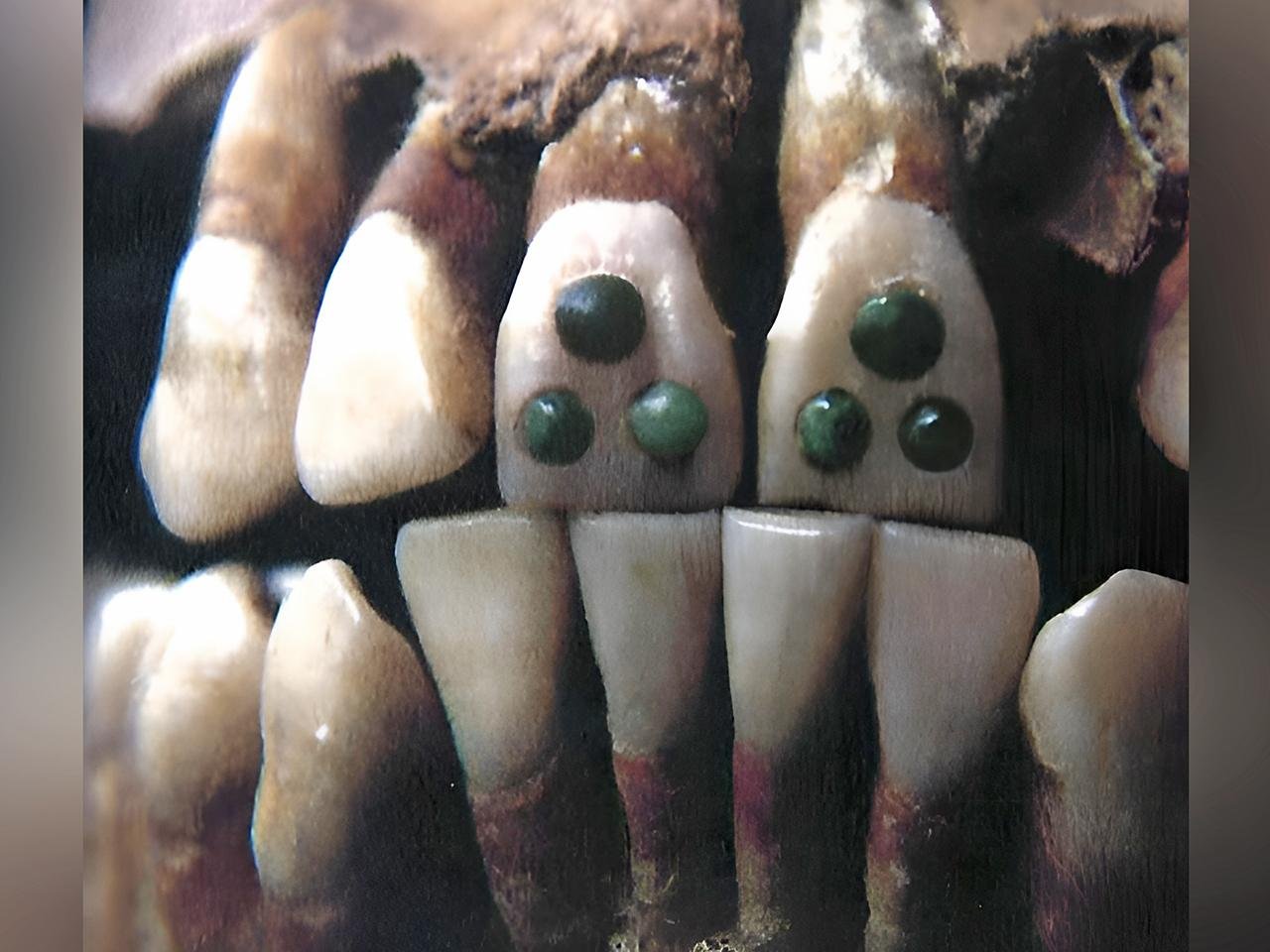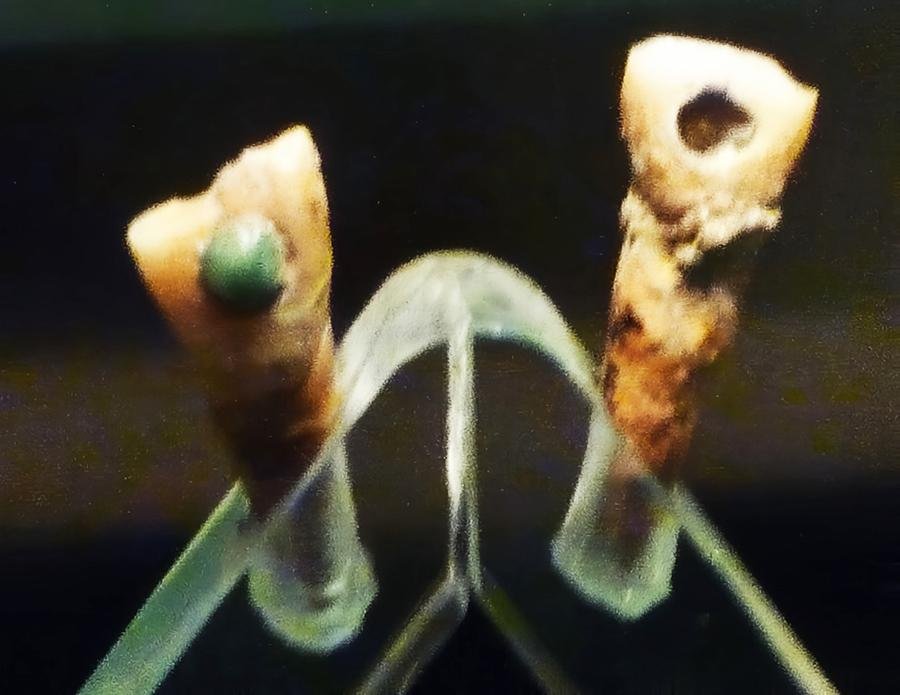Archaeologists have made a surprising discovery in Maya cultural traditions: decorative jade dental inlays, a practice previously thought to be exclusive to adults, have now been found in the teeth of children. The study, recently published in the Journal of Archaeological Science: Reports, was based on three isolated teeth from the Pre-Hispanic skeletal collection of the Popol Vuh Museum at Francisco Marroquín University in Guatemala.
 An example of inlay dental modification. Credit: Emmashavrick / CC BY-SA 4.0
An example of inlay dental modification. Credit: Emmashavrick / CC BY-SA 4.0
Dental modifications such as engravings, filings, and inlays were common among the ancient Maya during the Classic and Postclassic Periods (CE 250–1550). Using stone tools, craftsmen carved cavities into teeth and placed gems of a predetermined shape—most commonly jade, obsidian, or pyrite—fixed firmly in position by an organic cement. These procedures were typically performed on adults and, according to previous research, began no earlier than the mid-teenage years. Indeed, according to studies conducted by archaeologist Vera Tiesler, as many as 60 percent of adults displayed such modifications.
What’s interesting in this new discovery is that the teeth belong to children between 8 and 10 years old. One was a maxillary central left incisor, one a mandibular lateral incisor, and one a maxillary right canine. At the time of death, one child was estimated to be 9–10 years old, and the other two were 8–9 years old. Whether the incisors belonged to a single child or two individuals is unknown, but differences in skill levels show there was more than one person who had the work performed.
According to Phys.org, Dr. Andrea Cucina, co-author of the study, explained, “These teeth … are loose teeth that were donated to the Museum.” He added that there is no information whatsoever on their provenance, taphonomic record, social status, etc. But analysis confirmed that the inlays were placed in life, because the teeth showed biological responses such as protective dentine formation around the cavities.
 Mayan modified teeth exhibited at the Museo Nacional de Antropología e Historia, Mexico. Credit: Maunus / CC BY-SA 3.0
Mayan modified teeth exhibited at the Museo Nacional de Antropología e Historia, Mexico. Credit: Maunus / CC BY-SA 3.0
The precision of the work varied considerably. The mandibular incisor had the most careful craftsmanship, with the cavity penetrating only the enamel. The inlay of the maxillary central incisor went deeper into the dentin, but not all the way to the pulp chamber. These discrepancies may reflect the contributions of more than one artisan—or the treatment of different children.
Until now, the only other case involving a child with dental inlays was that of a three- to four-year-old from Pusilha in Belize. There, the inlays were placed after death, likely as part of a burial ritual. The Guatemalan examples, however, were clearly done on the children before they died and thus represent the youngest known people whose remains demonstrate such modifications.
Why should Maya children receive a procedure more prevalent in adults? Researchers are cautious. They suggest it might indeed be a regional, localized tradition. Another possibility is that the practice was tied to the accomplishments of social maturity. Around age 10, Maya children began taking on adult responsibilities, such as girls doing housework or boys laboring in the milpas. In this context, jade inlays could have been used to mark a child’s transition into adulthood.
While the precise meaning of these dental modifications remains a mystery, the discovery provides new avenues for understanding Maya society. These unusual specimens suggest Maya dental art was not as age-restricted as previously ᴀssumed.
More information: Ramírez-Salomón, M., Mata-Castillo, E., Monsreal-Peniche, M. B., Luin, C., Klee-Bueso, H., Cucina, A., & Vega-Lizama, E. (2025). Prehispanic Maya dental inlays in teeth with open apices: Implications for age of cultural practices. Journal of Archaeological Science, Reports, 67(105353), 105353. doi:10.1016/j.jasrep.2025.105353





